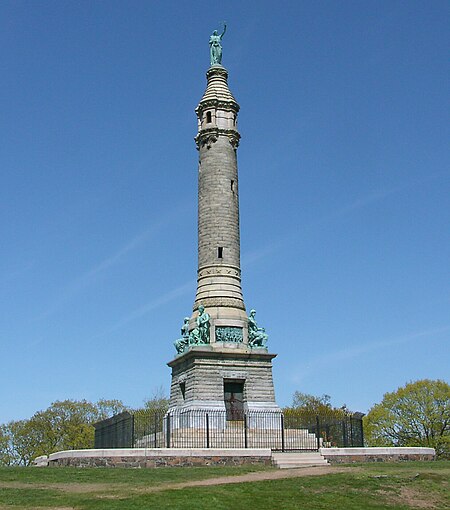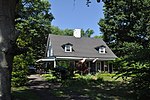Cedar Hill Yard is a classification yard located in New Haven, North Haven and Hamden, Connecticut, United States. It was built by the New York, New Haven and Hartford Railroad (often known simply as The New Haven) in the early 1890s in and around New Haven's Cedar Hill neighborhood, which gave the yard its name. Electrical catenary for electric locomotives was added to the yard in 1915. To handle increasing traffic as a result of World War I, the yard was greatly expanded between 1917 and 1920 with additional construction along both sides of the Quinnipiac River. The construction project added two humps where railroad cars were sorted into trains by gravity. The yard was further modernized in the 1920s, becoming one of the busiest railroad yards in the United States, and the most important yard in the entire New Haven Railroad system.
At its peak during World War II, Cedar Hill Yard handled more than 5,000 railroad cars per day. Following the end of the war the yard's importance began to decline as freight traffic across New England shifted to road transport, and heavy industry left the region. Much of the yard began to fall into decay following the New Haven Railroad's bankruptcy in 1961. Following the opening of the newly rebuilt Selkirk Yard near Albany, New York, in 1968, much of the traffic formerly handled at Cedar Hill Yard was directed there instead, and car float service between Cedar Hill Yard and New York City ended.
In 1969, the Penn Central Transportation Company took over the yard as part of its purchase of the New Haven Railroad. The yard's new owner promptly removed the electrical catenary and shut down one of the yard's two humps to save money. The next year, Penn Central went bankrupt, and the yard continued to deteriorate from deferred maintenance. Under Penn Central, the yard's importance further declined when the Poughkeepsie Bridge, the yard's key link to the rest of the United States, was damaged by a fire in 1974 and not replaced. Conrail, a new freight railroad formed by the United States government to reverse the fortunes of Penn Central and other bankrupt Northeastern United States railroads, took over operations in 1976. The yard's new owner initially made some improvements, but in 1980 decided to close the yard's remaining hump and move more operations to the yard in Selkirk. Cedar Hill Yard continued to be used to classify freight trains, but was turned into a flat yard, with trains built up and broken down by switcher locomotives.
Cedar Hill Yard was operated by Conrail until 1999, when CSX Transportation purchased Conrail's New England operations. In the first decade of the 2000s, CSX expanded the yard's operations by constructing a bulk cargo transfer facility, where bulk commodities are transferred between trains and trucks. CSX was joined in the yard by other railroads, including Amtrak, which uses part of the yard as a base for maintenance of way operations on the Northeast Corridor. Two other freight railroads also operate freight trains to and from the yard in the 2020s, including the Providence and Worcester Railroad and Connecticut Southern Railroad. Cedar Hill Yard remains the largest classification yard in Connecticut as of 2022 despite its diminished size. Proposals exist to rebuild portions of the yard, potentially in concert with the construction of the proposed Cross-Harbor Rail Tunnel in New York City or the resumption of car float service across Long Island Sound.








